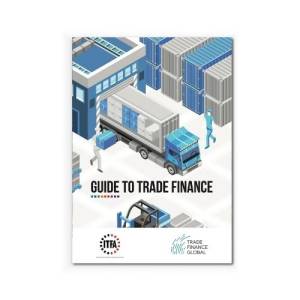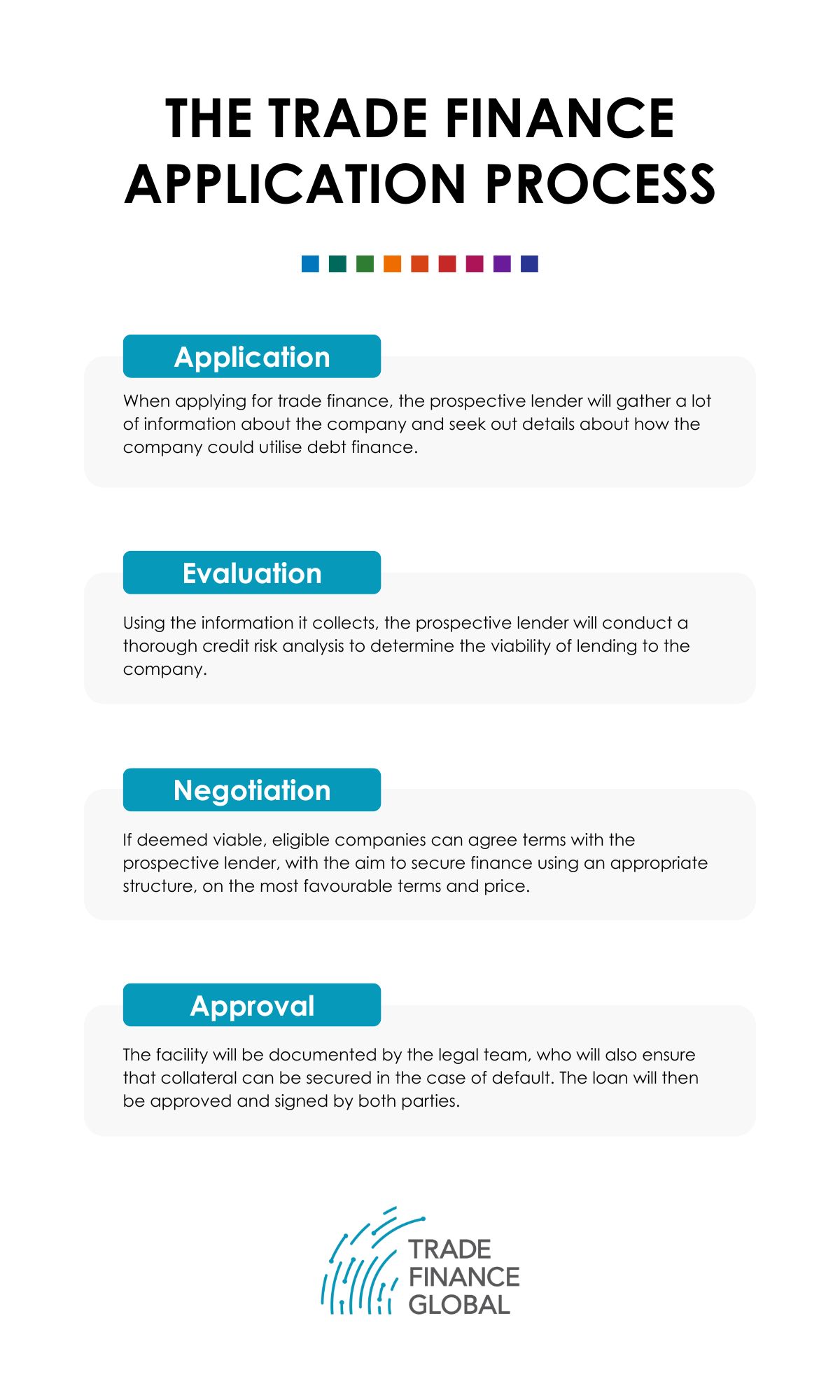
Do you want to know how access to trade finance can increase your cross-border imports and exports? Explore our Trade Finance hub for practical tools.
Are you a treasury or operations manager looking to mitigate the risks and efficiently manage your business’ cash flow? If so, check out our Treasury Management hub.
Whether you want updates from infrastructure support to cross-border transactions or clearing house operations to processing techniques, you can find all on our Payments hub.
Ready to to increase your imports / exports to guarantee the payment and delivery of goods? Find out more about LCs here.
Whether you’re transporting goods, or learning about supply chains, warehousing, transportation and packaging, we’ve got you covered.
Need to know which International Commerce Term is right for your needs? Explore our curated guides from shipping expert Bob Ronai.
Prioritising sustainable supply chains? Building inclusive trade? Working towards the UN’s 2030 SDGs? Read the latest on global sustainable standards vs green-washing here.
Heading into international markets? From the correct documentation to standardisation, here’s what you need to know for a streamlined customs clearance process.
TradeTech is rapidly evolving to help reduce some of the biggest challenges when it comes to trade. Keep up with these innovations here.
The issues feature experts across the industry on the latest developments with specific themed and regional editions.
Insights by the industry, for the industry. These include thought leadership pieces, interview write ups and Q&As.
Working closely with industry experts and trade practitioners we provide inclusive educational guides to improve your technical knowledge and expertise in global trade.
We undertake qualitative and quantitative research across various verticals in trade, as well as create reports with industry association partners to provide in-depth analysis.
Subscribe to our market-leading updates on trade, treasury & payments. Join the TFG community of 160k+ monthly readers for unrivalled access in your inbox.
Welcome to Trade Finance Talks! On our series we hear from global experts in trade, treasury & payments.
Experience the true nature of the TFG community through panel discussions on the latest developments - engage with questions.
Join us as we interview leaders in international trade, treasury, payments and more! Watch and learn.
We partner with industry conferences around the world to ensure that you don’t miss out on any event; in person or online, add to your calendar now.
Get involved in our most important campaign of the year, celebrating the achievements of women in our industry and promoting gender equity and equality.
Our excellence awards in trade, treasury, and payments are like no other. You can't sponsor them, and they're independently judged. They are the most sought-after industry accolades.
Trade finance is a tool that can be used to unlock capital from a company’s existing stock, receivables, or purchase orders. Explore our hub for more.
A common form of business finance where funds are advanced against unpaid invoices prior to customer payment
Also known as SCF, this is a cash flow solution which helps businesses free up working capital trapped in global supply chains.
A payment instrument where the issuing bank guarantees payment to the seller on behalf of the buyer, provided the seller meets the specified terms and conditions.
The release of working capital from stock, through lenders purchasing stock from a seller on behalf of the buyer.
Due to increased sales, a soft commodity trader required a receivables purchase facility for one of their large customers - purchased from Africa and sold to the US.
Purchasing commodities from Africa, the US, and Europe and selling to Europe, a metals trader required a receivables finance facility for a book of their receivables/customers.
An energy group, selling mainly into Europe, desired a receivables purchase facility to discount names, where they had increased sales and concentration.
Rather than waiting 90 days until payment was made, the company wanted to pay suppliers on the day that the title to goods transferred to them, meaning it could expand its range of suppliers and receive supplier discounts.


Mark heads up the trade finance offering at TFG where his team focuses on bringing in alternative structured finance to international trading companies.
We assist companies to access trade and receivables finance through our relationships with 270+ banks, funds and alternative finance houses.
Download our free trade finance guide

Each lender has specific requirements and criteria which must be addressed before funds can be advanced to a business and some lenders are more risk-averse than others.
The lender type (bank vs non-bank, large vs small) and their risk appetite will also determine the interest rate that is charged to a business and the repayment conditions.
There is a clear process when applying for a loan or other trade facility.

While the exact requirements can vary based on the subtle nuances of every situation, there are generally four main stages in the trade finance application process: application, evaluation, negotiation, and approval.
The process starts when the business submits a credit application to the lender.
When applying for trade finance, the lender will ask for a set of information on the company, the individuals involved (such as the directors), and details on why the business is seeking debt finance.
Trade finance is typically most suitable for businesses that are already trading either domestically or cross-border so most lenders will expect to see some form of track record showing trading revenues on past transactions.
Some of the most common items lenders will require in an application are:
Other items may include:
Generally, a business plan with financial forecasts is essential to show to a banker that your business idea is sound and realistic, that you can implement it successfully, and that you know what the finance will be used for.
Business plans do vary in format, but usually include:
The lender will undertake a full credit risk assessment of the documents that it receives.
The credit analysis will usually involve inputting figures from the applicant’s income statement, balance sheet, and cash flow documents.
The analysis will also consider the quality and quantity of the collateral the business can provide and the status of suppliers, customers, and trade cycles.
The evaluation process will normally involve some kind of credit scoring, taking into account any vulnerabilities such as the market the business is entering, the probability of default, and the quality of management.
A credit score is normally ranked from AAA (very low risk of default) to D (likely to result in the denial of a loan application).
Lenders will generally examine several key qualitative and quantitative metrics including:
Eligible businesses applying for trade finance can negotiate terms with lenders, which is a critical step given that a business’s aim with a lender is to secure finance on the most favourable terms and price.
Some of the terms that can be negotiated include non-interest costs, fees, fixed charges, and interest rates.
If you’re prepared and understand the structure of fees and charges, it can help you negotiate terms that are in your favour.
Sometimes it may be a good idea to seek advice from your local trade body to avoid risks and understand the charges and the structure of the loan and insurance.
If everything goes well, the next stage in the process will be the approval.
Typically, the account officer who initially deals with the applicant and collects all of the documentation will do an initial credit and risk analysis.
This then goes to a specific committee or the next level of credit authority for approval.
If the loan is agreed upon (on a preliminary basis) it goes to the legal team to ensure that collateral can be secured and to mitigate any risks in the case of default.
A senior director at the bank will also need to sign the loan documents.
The loan document is a legally signed contract from both parties that consists of definitions and a full description of the finance facility that has been agreed upon (e.g. amount, duration, interest rates, currency, and payment terms – both interest and non-interest charges).
The conditions of a loan will also be included, which will state any obligations of the buyer and the lender, as well as what would happen in the case of any disputes or a default.
To maintain a good relationship with any lender, the business must make debt repayments (including interest) in a timely manner, according to its contractual and legal obligations.
This should also protect the business’s credit rating.
Establishing and maintaining a good reputation as a borrower is key to accessing further funding and larger facilities, as the business grows and trade volumes increase.